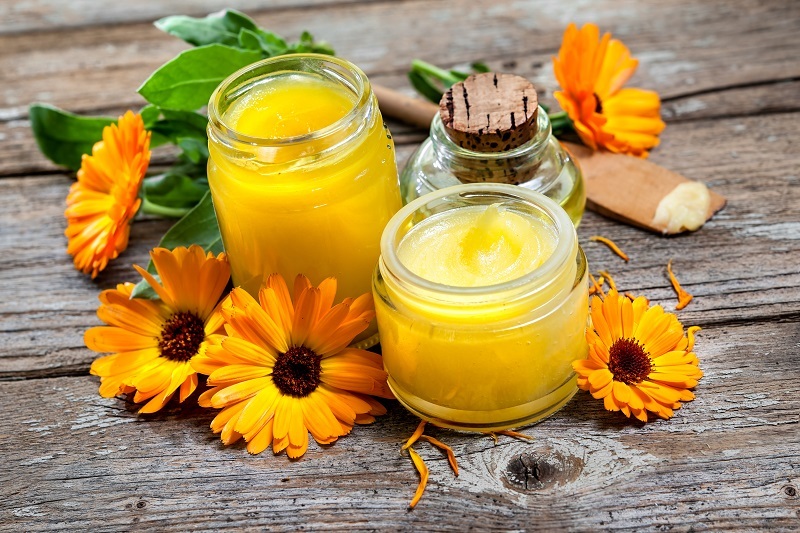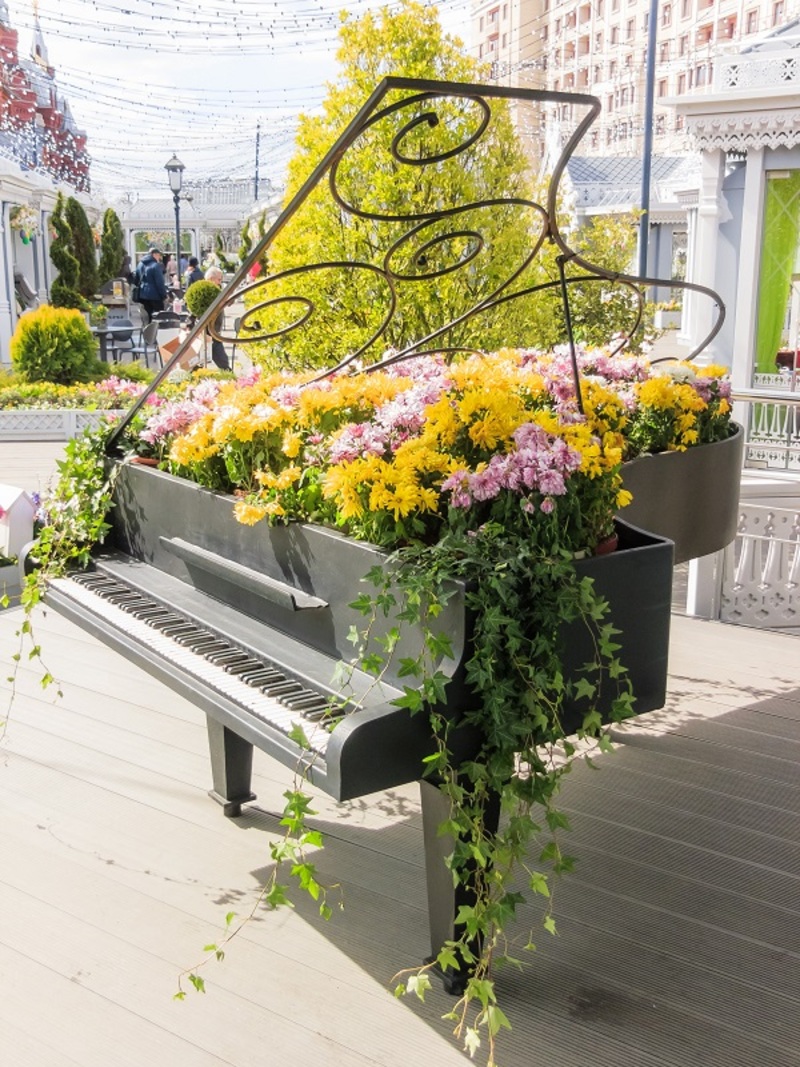Master the Art of Keeping Poinsettias Fresh and Blooming
Posted on 21/08/2025
Master the Art of Keeping Poinsettias Fresh and Blooming
With their eye-catching color and festive flair, poinsettias are an iconic symbol of the holiday season. Yet, after the holidays, many people struggle to keep these vibrant plants alive, let alone to maintain their dazzling blooms. If you want to enjoy the beauty of poinsettias well into the new year (and even beyond), mastering their care is essential. This comprehensive guide will teach you how to keep poinsettias fresh and blooming, ensuring they remain the centerpiece of your indoor garden.
Understanding the Poinsettia: More Than Just a Holiday Plant
Poinsettias (Euphorbia pulcherrima) hail from Mexico and thrive in warm climates. Their signature "blooms" are actually colorful bracts--specialized leaves that surround the small, yellow flowers at the plant's center. While the bright red variety is the most famous, you can find poinsettias in shades of white, pink, orange, and striking bi-color blends.
To keep poinsettias healthy and blooming, it's crucial to understand their natural habitat. Warmth, indirect sunlight, and humidity are keys to their longevity. Many common mistakes come from treating them as disposable holiday decor rather than the long-living perennials they are.

Poinsettia Care: Your Guide to Keeping Them Vibrant
1. Choose the Right Plant
- Healthy bracts and foliage: Select a plant with dense, colorful bracts and deep green leaves.
- Check for pests: Inspect the underside of leaves for insects or white powdery mildew.
- Avoid cold stress: Steer clear of plants exposed to chilly drafts in store entryways; these may already be stressed.
2. Ideal Placement: Light and Temperature Matters
- Bright, indirect sunlight: Place your poinsettia in a well-lit room--preferably near a window, but shielded from direct midday sun which may scorch the leaves.
- Stable temperature: Keep temperatures in the range of 65-75?F (18-24?C) during the day. Night temperatures can drop to 60?F (16?C), but avoid colder conditions which may trigger leaf drop.
- Keep away from drafts and heating vents: Sudden temperature changes can harm your poinsettia.
3. Watering Your Poinsettia Properly
Overwatering is the primary reason poinsettias lose their vitality. Here's how to get it right:
- Check the soil moisture: Water when the top inch of soil feels dry to the touch.
- Ensure good drainage: Always remove the foil wrapping or punch holes in the bottom; standing water leads to root rot.
- Water thoroughly: Allow water to run through the drainage holes, then discard excess water from the saucer.
- Avoid overwatering and underwatering: Wilting leaves can be a sign of both, so always check the soil before watering again.
4. Maintaining Humidity
Poinsettias love humidity--especially in dry winter homes. To keep your poinsettias fresh and blooming:
- Mist the leaves: Gently mist daily, but avoid soaking the bracts and flowers.
- Use a humidity tray: Place the pot on a tray filled with pebbles and water, ensuring the base of the pot sits above the waterline.
- Keep away from hot air: Avoid placing plants near radiators or heaters.
5. Fertilize for Ongoing Vitality
Fertilization is not required while the plant is blooming, but for long-term care:
- Start after the holiday bloom fades: Use a balanced, all-purpose houseplant fertilizer every 4-6 weeks starting in late winter or early spring.
- Avoid overfeeding: Too much fertilizer can damage the roots and leaves.
How to Keep Poinsettia Blooms Vibrant Beyond the Holidays
After the Holidays: What to Do Next?
Once the holiday season is over, many people discard their poinsettia plants, but with a little dedication, you can keep them thriving for years. Here's how:
- Cut back in spring: When the colorful bracts begin to fade (usually in March or April), cut the plant back to about 6 inches high. This encourages new growth.
- Repot if necessary: If roots fill the container, move your poinsettia into a slightly larger pot with fresh, well-draining potting soil.
- Resume regular care: As new growth appears, continue your routine of watering, feeding, and ensuring proper light.
Encouraging Reblooming: The Secret to a Year-Round Display
Getting your poinsettia to rebloom for the next season requires controlling its exposure to light and darkness. Follow these steps:
- In early fall (late September): Starting about eight weeks before you want blooms, provide 14-16 hours of total darkness each night. Cover the plant with a box, blackout cloth, or place in a closet from 5PM to 8AM.
- Daytime bright light: Move your plant to a sunny window during the daytime, ensuring it gets 6-8 hours of indirect sunlight.
- Consistent care: Continue watering and fertilizing as usual. Avoid temperature fluctuations and drafts.
- Monitor progress: After 6-8 weeks, once bracts start showing color, you can return your poinsettia to normal indoor light.
Avoiding Common Poinsettia Problems
- Wilting leaves: Usually a sign of overwatering or underwatering. Always check the soil moisture.
- Dropped leaves: May result from cold drafts or sudden temperature changes.
- Lack of color or failure to bloom: Occurs if the plant does not receive proper periods of darkness in early fall.
- Pest infestations: Watch for whiteflies, spider mites, and aphids. Treat with gentle insecticidal soap or remove pests manually.
Troubleshooting Quick Tips
- Leggy growth: Pinch off stem tips in summer to encourage bushier growth.
- Root rot: Remove affected parts and avoid standing water.
- Yellow leaves: May be caused by poor drainage or insufficient light.
Myths vs. Facts: Poinsettia Safety and Toxicity
There's a persistent myth that poinsettias are highly toxic to people and pets. However, scientific studies have shown that while eating large quantities may cause mild stomach upset, poinsettias are not deadly poisonous. It's still wise to keep them out of reach of curious pets and children due to the latex-like sap, which may irritate sensitive skin.
- Fact: Poinsettias are not fatally toxic.
- Myth: Poinsettias will kill a cat or dog if ingested. In reality, symptoms are usually mild, such as drooling or a mild stomach upset.
- Fact: Sensitive individuals may develop skin irritation from the sap. Handling with gloves is a simple precaution.
Poinsettia Varieties for Every Taste
If you enjoy experimenting with color, growers now offer a wide range of poinsettia varieties. From creamy whites and rich pinks to marbled reds and whimsical speckled patterns, there's a poinsettia for every decor style.
- Classic Red: The traditional choice for Christmas celebrations.
- Jingle Bells: Red bracts speckled with cream or white.
- Marble: Soft pink and cream variegation.
- Winter Rose: Curled bracts resembling rose petals.
- Ice Punch: Icy white centers with deep red borders.
FAQs on How to Keep Your Poinsettia Fresh and Blooming Year-Round
Can I replant my poinsettia outdoors?
In USDA zones 9-11, you can plant poinsettias outside. Be sure to acclimate them gradually. In cooler climates, keep them as potted houseplants.
How long do poinsettia blooms last?
With optimal conditions, the vibrant bracts can last up to three months. With proper after-bloom care, you can encourage reblooming next season.
What causes my poinsettia to drop leaves?
This typically happens due to cold drafts, abrupt temperature changes, or inconsistent watering. Keep your plant in a stable environment.
Are my poinsettias safe around pets?
While not highly toxic, the plant's sap may irritate your pet's mouth or digestive system. Place it out of reach or supervise curious animals.
Can I use artificial light for reblooming?
Yes! If natural sunlight isn't available, use full-spectrum grow lights for 6-8 hours during the day and provide complete darkness at night.

Seasonal Poinsettia Care Checklist
- Winter: Enjoy your poinsettia in bright, indirect light. Keep soil moist, boost humidity, and stay away from cold drafts.
- Spring: Prune faded bracts. Resume light fertilization. Repot if roots are crowded.
- Summer: Move the plant outdoors to a shaded porch if weather permits. Pinch back stems for bushy growth. Water regularly.
- Fall: Begin the darkness treatment in September or October for reblooming. Move back indoors before the first frost.
Conclusion: Enjoy Beautiful, Blooming Poinsettias All Year
Mastering the art of keeping poinsettias fresh and blooming is well within reach for any plant lover. With proper care--including correct light, humidity, watering, and fertilizing--you can transform your holiday centerpiece into a year-round spectacle.
Whether you're aiming for festive charm during the winter holidays or want to enjoy the splash of color poinsettias offer every day, remember: patience and attention are key. Follow these comprehensive tips, and you'll not only extend the lifespan of your poinsettia, but perhaps spark a lifelong appreciation for this beautiful plant.
Ready to turn your seasonal poinsettia into a long-lasting favorite? Get started today, and let your carefully nurtured blooms be the envy of all who visit your home!
Latest Posts
Master the Art of Keeping Poinsettias Fresh and Blooming
Crafting Memorable Birthdays with These Flower Choices
Guarding the Beauty of Your Hydrangeas
What Does Your Birth Flower Symbolize About Your Unique Self
Explore 10 Incredible Low Maintenance Office Plants for Fresh Air





